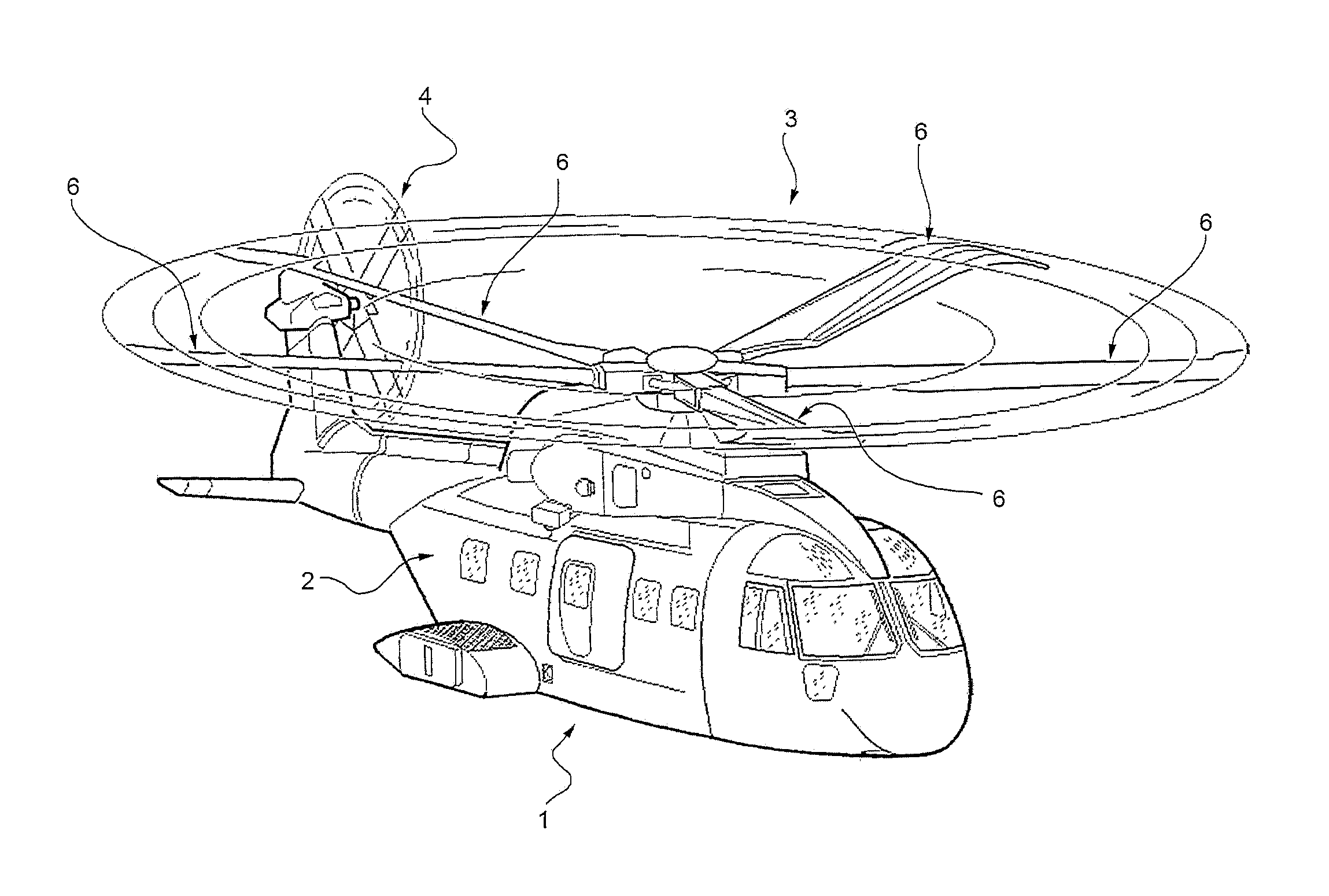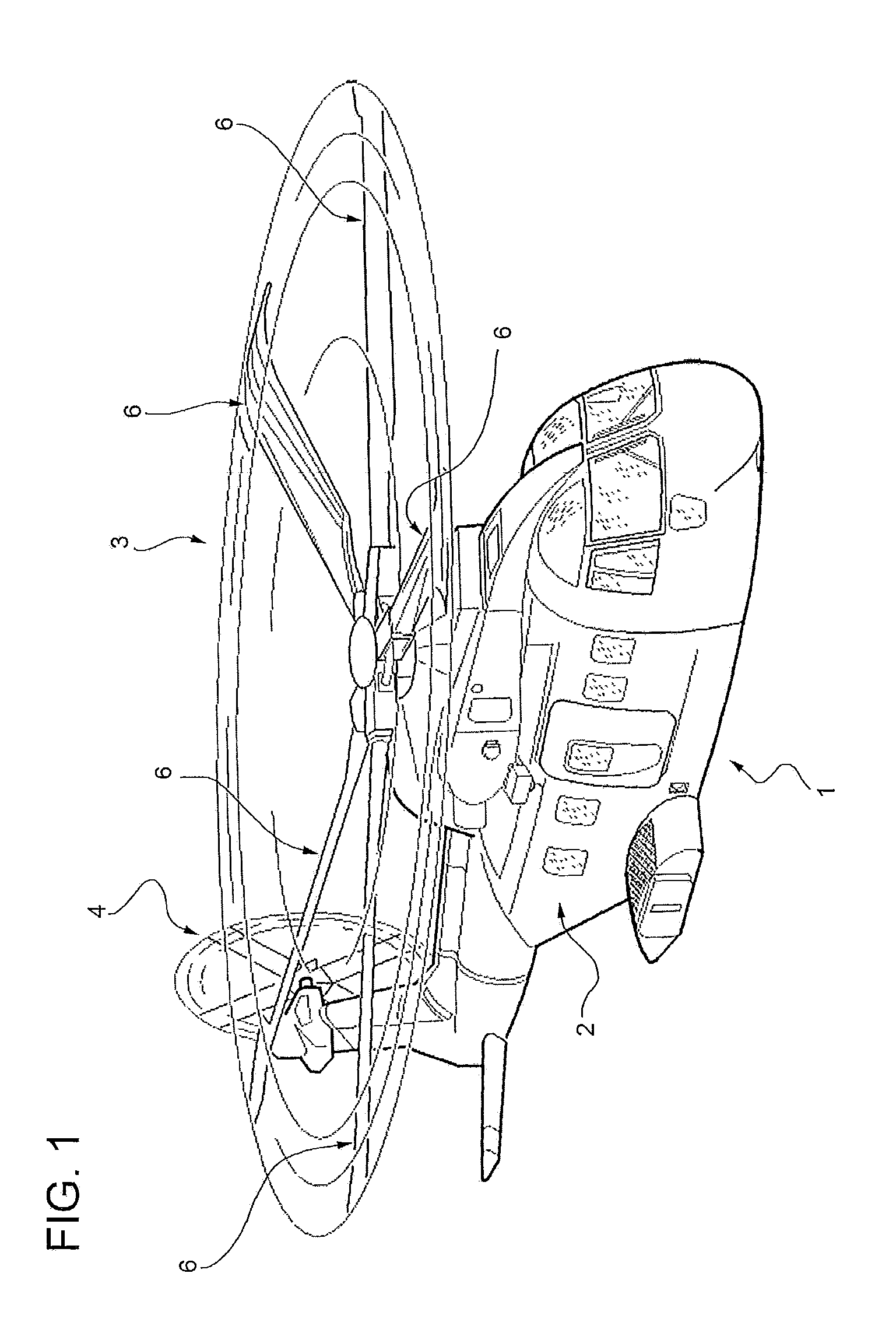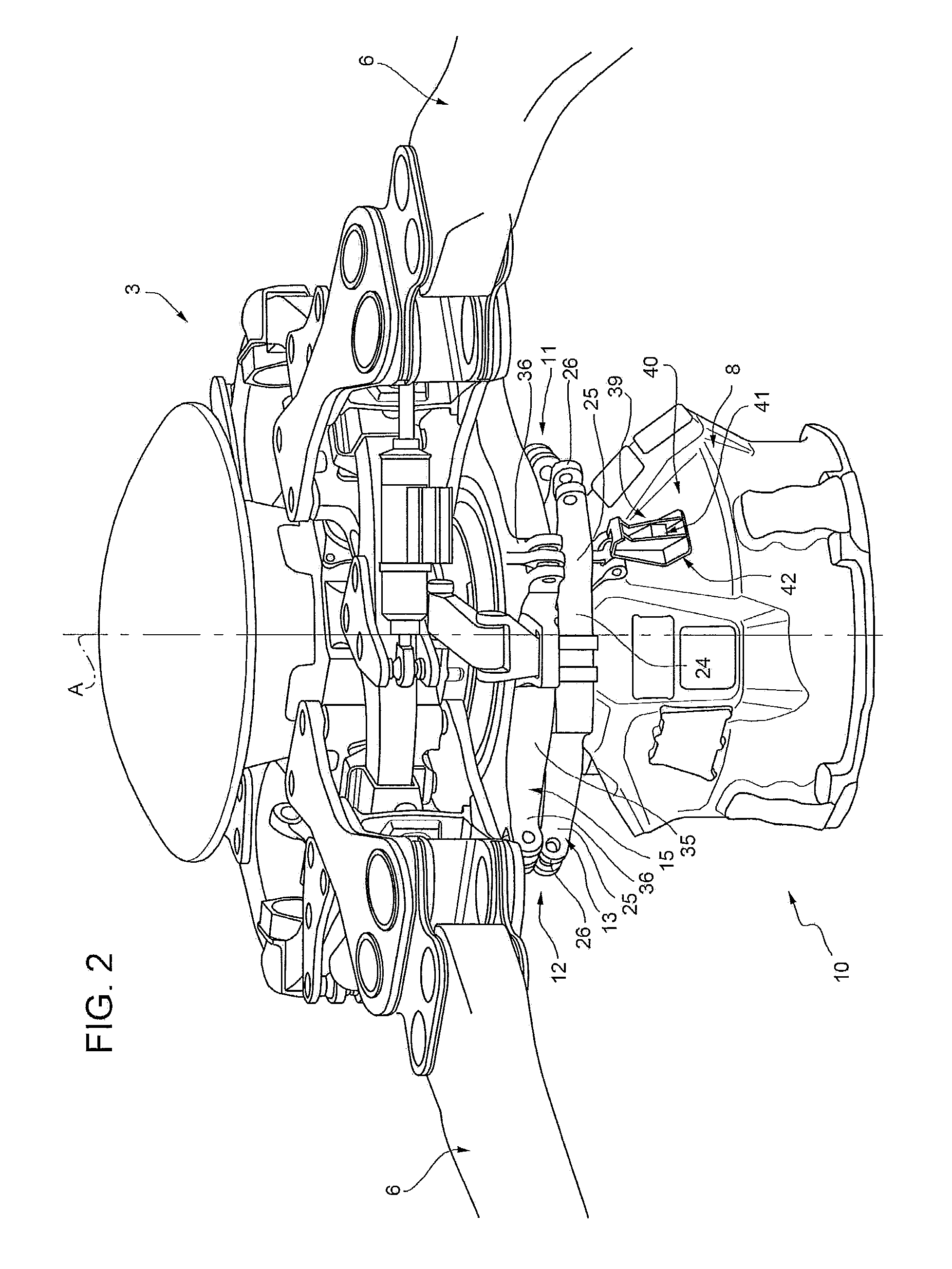Rotor assembly for an aircraft capable of hovering and equipped with an improved constraint assembly
a technology of rotor assembly and hovering, which is applied in the direction of propulsive elements, propellers, vessel construction, etc., can solve the problems of /b> being relatively complex, compass connecting devices, and /b> having three hinged parts, and further compounding the above drawbacks
- Summary
- Abstract
- Description
- Claims
- Application Information
AI Technical Summary
Benefits of technology
Problems solved by technology
Method used
Image
Examples
Embodiment Construction
[0024]Number 1 in FIG. 1 indicates as a whole an aircraft capable of hovering—in the example shown, a helicopter.
[0025]Helicopter 1 substantially comprises a fuselage 2; a main rotor 3 mounted for rotation on the top of fuselage 2 to sustain helicopter 1 as a whole; and a tail rotor 4 fitted to the rear end of fuselage 2 and rotating in a plane crosswise to that of rotor 3 to counteract the torque generated on fuselage 2 by rotor 3.
[0026]With reference to FIGS. 1-3, rotor 3 substantially comprises a drive shaft 5 of axis A, and a number of blades 6 connected in known manner to the top end of drive shaft 5, and projects from the top of a fixed housing or pylon 8 fitted in known manner (not shown) to fuselage 2. More specifically, drive shaft 5 is supported inside housing 8 by means of bearings (not shown) to rotate about axis A, extends substantially vertically, and projects outwards through an end opening in housing 8.
[0027]Rotor 3 and housing 8 together define a rotor assembly 10 i...
PUM
 Login to View More
Login to View More Abstract
Description
Claims
Application Information
 Login to View More
Login to View More - R&D
- Intellectual Property
- Life Sciences
- Materials
- Tech Scout
- Unparalleled Data Quality
- Higher Quality Content
- 60% Fewer Hallucinations
Browse by: Latest US Patents, China's latest patents, Technical Efficacy Thesaurus, Application Domain, Technology Topic, Popular Technical Reports.
© 2025 PatSnap. All rights reserved.Legal|Privacy policy|Modern Slavery Act Transparency Statement|Sitemap|About US| Contact US: help@patsnap.com



